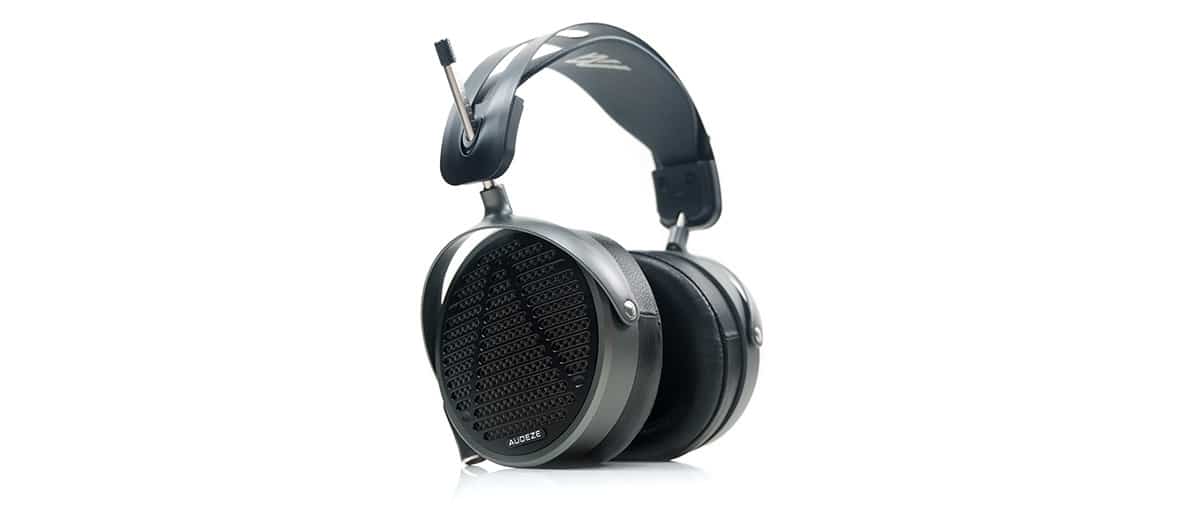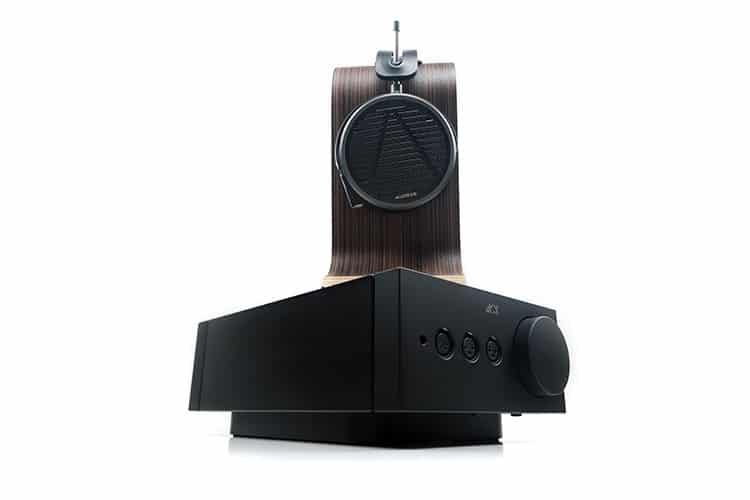Sound Impressions
The following impressions were gathered using two stacks, the dCS Lina, (amp, DAC, and clock) and the Ferrum OOR combined with the LP P6 Pro balanced line out as a source.
Summary
There are a few headphones that may not be necessarily the technical pinnacle of what a headphone can do but in other ways can produce a strong emotive response that makes them incredibly enjoyable to listen to.
In my time I can think of a few such as the final D8000 and the Rosson Audio Design RAD-0 and going way back even the very first LCD-2 pre-Fazor stirred some emotions. Well, I am now adding the MM-500 to that list.
No, you will not find endless bass thumping or a hugely dispersed staging quality with these headphones. In fact, it’s relatively neutral in that regard and fairly rounded to mid-forward for imaging which will be no surprise to fans of the most recent ‘Audeze House sound’ incarnation from the LCD-5.
Rather, it’s the level of engagement it teases out of each listening experience that is utterly fantastic. The MM-500 has the energy to burn, with a snappy yet smooth-sounding coloration and a top-end that is perhaps the most coherent and pleasing Audeze has produced to date.
If you are coming from an older LCD-X you are in for a bit of a treat with the impressive clarity the MM-500 can bring to the table. Even when the music is at its busiest you can’t miss the improved midrange clarity and separation, as well as some powerful vocal performances that the older X sometimes struggled with.
One final treat is just how easy the MM-500 is to drive and how well it responds to crossfeed producing a very natural acoustic simulation that works wonderfully well with hard rock classics that need space, speed, and power to shine. Despite its pro-audio pitch, this is still an emotive headphone response for me on a personal level.
Frequency Response
Once again, Audeze has gone for something relatively close to the Harman target with only a few minor, and dare I say it, agreeable deviations.
You will hear those change-ups sub-100Hz with a slightly flat but well-extended bass response and a little north of neutral head gain around 2-3k which stretches the stage to produce that mid-forward imaging experience.
From there, the MM-500 fades in a linear natural fashion from down to 8-10k with a minor treble shelf 5-8k though still south of the Harman target curve by a few dB and secondary to the midrange head gain level.
It is a very smooth and coherent treble tuning for me personally so despite the level of head gain it doesn’t seep into the midrange harmonics and unbalances it in a distracting manner. Percussion and vocals have excellent body and energy but very little in the way of overly emphasized splashiness or sibilance.
Aside from that, there is a nice steady linear rise from 500Hz right up to 2k and a slight bit of mid-bass emphasis over sub-bass rumble which gives chugging guitar chords some beautiful presence and authority.
Timbre
Despite what I would loosely term a relatively neutral response curve the overall coloration of the MM-500 for me tends to err to the slightly natural side.
Depending on your amp and DAC I would say the harmonic balance is pleasing though not overly euphonic either. It has a slightly rounded quality to it with that secondary treble shelf and linear fade post 5k not bleeding too much into the midrange harmonics which is a must for my listening preferences given the stronger head gain amplitude slightly further down.
As a result, vocals are smooth but neither overly sweet, sharp, or dull sounding. They have a nice energetic clear presentation to them without resorting to overly high levels of contrast that can sometimes thin out the sustain of note too much, robbing them of any natural weight.
Compared to the original LCD-X, the MM-500 does not have the same bass shelf lift with a comparative neutral weighting. However, it extends really well with a slight mid-bass lift giving it a decent and tight punchy tone.
Combined with a lower-mids rise guitars are fleshed out beautifully and are probably one of my favorite aspects of the MM-500 tuning.
If you enjoy a bit of classic hard rock then you need those chord and amp distortion to come through very clearly. So, whilst the fundamental on the MM-500 is not huge in terms of rumble, the lower mids still deliver some excellent body and a relatively natural to neutral coloration with excellent separation and control.
Staging & Dynamics
The MM-500, like the LCD-5, is more intimate than expansive with a rounded staging quality for an open-back rather than a diffuse arena-like presentation.
The focus of the MM-500 soundstage is on clarity and relative imaging accuracy delivering improved layering and a much more holographic performance over older models such as the 2014 LCD-X.
Despite the forward mids, the staging still feels properly layered and 3-dimensional so you are unlikely to miss much unless you really want that super wide HD800 experience.
I suspect that is perfectly fine for pro-audio mixers who need a realistic stereo imaging presentation that translates well to speakers. In fact, applied with crossfeed the MM-500 sounds in its element with one of the most pleasurable studio room-like deliveries meaning not too dry or with tons of decay closing down the space.
One interesting thing to note and this is just a preference thing for me. The staging will widen a little with improved channel separation if you go with a good amp using a balanced connection.
However, at the same time you want to make sure your DAC is not feeding too much Vrms and power in general as this ups the vibrancy and can actually pull the perceived soundstage even further forward, (without crossfade applied). That might make things a little fatiguing and possibly harder to pick out any subtle notes and cues during listening.
Synergy
Efficiency
The MM-500 is rated at 18Ω and 100dB SPL so in all a fairly efficient planar magnetic headphone and in line with the engineering goals of both the LCD-X and the LCD-5.
As such, you will find this particular headphone almost as easy to drive as the original LCD-X and perhaps even easier than the current flagship. I say almost because I did find just a tiny bit of volume difference between it and the original 2014 LCD-X using a 1.4W 32Ω single-ended output, (Lina Headphone amplifier).
That being said, the MM-500 is incredibly versatile with both portable and desktop, tube and solid-state all within its grasp.
It is a shame in some way that it only comes with a 6.35mm jack because I would recommend going balanced with the MM-500, in either 4.4mm or 4-pin XLR just to maximize the potential of this headphone with portable sources or with desktops with a big difference in SE and balanced output performance.
That being said, the MM-500 will not sound underpowered with everything from a modest Rupert Neve RNHP 300mW output right up to a more brutal 6W Feliks Audio Envy pairing, and for portable, the FiiO M17 sounded at ease also with a 4.4mm connection.
Pairings
How you pair the MM-500 ultimately depends on how you are going to use it. I suspect a solid-state pairing will suit those looking for a bit of clarity for mixing but some amps sounded a lot more fun to simply listen to also.
The Envy pairing is more for pure listening enjoyment than a reference tool. It really pushes down hard producing perhaps the most enjoyable bass density and depth from the MM-500. The vocal timbre is actually quite smooth though still forward, smoother than the OOR for example.
The Ferrum OOR, on the other hand, was a lot wider sounding even though I wouldn’t consider it the most expansive for staging. What you really get here is absolute clarity and excellent dynamic range with the MM-500. Feed it a good source and the MM-500 will respond very well to the OOR/HYPSOS combo if you are after excellent resolution.
Dynamics
For those who want to sit back and relax a little then I would recommend a DAC with a 2V output, (4V balanced). Also, nothing too high on the gain of any powerful amplifiers and if the amp has an impedance rating then keep it medium to low.
In short, do not stress the MM-500 out or give the amp too much dynamics with a strong Vrms output which seems to really push those upper mids far too hard and skew the staging a bit too much.
For example, the dCS Lina DAC with a 2V output to the matching Lina Headphone amplifier was purer and more refined sounding compared to its vibrant 6V alternative. Vocals sounded clean, distortion-free, and though forward still quite smooth and enjoyable.
A similar Vrms case also with the Anni/Qutest pairing from Chord and its 3V output which is just a little bit more stressful sounding with the MM-500 compared to its more serene 2V performance.
Crossfeed
You can throw on the crossfeed option also for both the Lina and the Bartok, (or any good crossfeed capable DAC) to produce an even calmer and more natural soundstage if you plan to go balanced.
You get the best of both worlds with this setup taking advantage of the excellent layering and separation from the MM-500 within a very realistic speaker-like acoustic simulation in front of you rather than extreme left and right.



